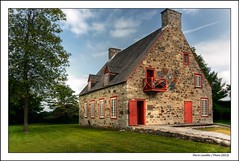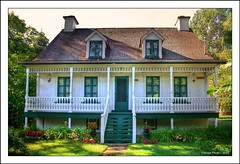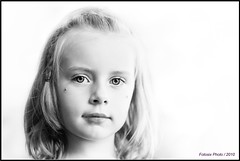Sony A850
Sony Alpha A850 camera
 The Sony A850 is an awesome camera, as long as you know what to look for in a camera system. That said, when I was deciding to move up to full frame, I had to make a decision: Did I stick with Nikon, or try Sony? Well, I went with the A850 and I’m glad I did.It’s a great camera.
The Sony A850 is an awesome camera, as long as you know what to look for in a camera system. That said, when I was deciding to move up to full frame, I had to make a decision: Did I stick with Nikon, or try Sony? Well, I went with the A850 and I’m glad I did.It’s a great camera.
Solid feel throughout, with a very positive grip on the right.Command wheels “click” firmly, unlike cheaper builds that will be accidentally turned.Viewfinder is awesome, big, bright.Most buttons are within easy reach, except the ISO and WB buttons on the upper-right.I also don’t like the optical preview button orientation (I prefer to press the button towards my body instead of inward towards the lens), but a small niggle.Once you pick up the A850, you know you’re holding a solid piece of machinery.
Ultimately, the reason I bought into Sony.The image quality is amazing.Colors are outstanding.Details are definitely there.I can crop for days and still end up with a large, high-detail file.I can (and do) print large, which was a deciding factor over the D700 (I did not consider the 5DII, as I dislike Canon controls).
Overall, a great camera (system).I like how the body performs, and I like the glass I can attach to it.It’s not perfect, of course (what camera is?), but for $2000 you get a high-quality full-frame camera with loads of megapixels.If this suits what you shoot (which it does for me), then take a strong look at the A850.
Ali Jennings from Digital Camera takes a look at the Sony Alpha 850, the full-frame DSLR to rival the Canon 5D Mark II and the Nikon D700. Taken from PhotoRadar.com.
Extract from an article by David Flores (1)
« What type of camera do you use? A studio camera? A sports camera? Pro? Pro-sumer? Entry level? » The discussion of photography has changed dramatically in recent years. Dialogue has shifted from concept and intent to hardware and accessories. This talk is common on the internet, in art departments, even in university classes and photo clubs. But when studying an actual image, something changes. We forget the branding and the specs and the marketing hype. Our consideration of time, value, and life is forever altered. We are reminded in fact, that we are human – not studio human, sports human, professional or entry level. We experience things and, in the click of a shutter, can share those experiences with one another. I’ve been using a pre-production model of the Sony Alpha A850 for better than a week now, and have enjoyed the break from my daily use camera outfits. Build quality is solid – on par with the flagships from other manufacturers. Controls are clearly marked and operate as single function. The ISO button is the ISO button. It doesn’t share the responsibility of operating exposure compensation. There’s another button that does that all by its self. There are no fluffy extras padding the A850; no glittery bonus features. The camera does not have a Live View mode. It can’t shoot continuously at 10 frames per second nor does it boast HD Video recording. Feature freaks caught up in market trends will have a hard time seeing the most unique, stand-out quality of the A850. The camera is a camera. It forces the user to focus on what’s in front of them, and rewards the perfect synergy of awareness, technique, and perspective. The Sony Alpha A850 challenges photographers to reexamine the way they see. Subjects are framed from the shooter’s perspective, not a superfluous set of glossy features. Make no mistake about it: By this metric, the A850 is one of the best digital camera offerings in recent years. Form and FunctionThe camera body feels good in your hands. A slightly modified version of the A900 shell, an all-metal construction offers a superb, tactile touch. The grip is wide with a slightly rounded catch for the middle, ring and pinky fingers. This makes holding the camera comfortable for those with both large and small hands. Two quick command dials located at the top right, rear corner of the body and in front of the shutter release can be programmed for either aperture or shutter control. A simple mode dial on the top left panel allows you to select from a concise set of exposure modes. Full manual control is the crux of the A850, but aperture priority, shutter priority, and program mode are also available. A forgettable automatic setting is blindly thrown into the mix, while 3 customizable modes can be programmed for shooting convenience. A large ISO range (100-6400) provides shooters the flexibility to work under a wide variety of lighting conditions. A selectable burst rate of up to 3 frames per second captures action with considerable efficiency. Creative Styles, Sony’s user-selectable, user-customizable « film looks » carry over directly from the A900. Vivid, Neutral, Portrait, Landscape, and nine other settings can be tweaked for contrast, saturation, sharpness, brightness, and zone shooting. Core functions get their own dedicated buttons. ISO, white balance, drive mode, and exposure compensation are clearly labeled and available on the right top panel. These settings are easy to review on the camera’s bright 3.0″ LCD. Other critical information, such as selected focus points, creative styles, file formats, and shots remaining are displayed, too. A top info panel shows shutter and aperture settings along with battery life and shots remaining, but also gives a simplified representation of a selected core function.
The viewfinder is large and bright with 0.74x magnification. The frame is viewed with 98% accuracy and offers exceptional clarity using an all glass pentaprism. Nine selectable AF points are clearly visible without detracting from a framed subject. Corner hatch marks for framing 16:9 ratio images are present, but too subtle for impromptu shooting. Image QualityThe A850 is Sony’s second DSLR to offer a full frame, 35mm image sensor. Packed with 24.6 megapixels of resolution, photographs are presented with stunning detail for oversize printing or cropping applications. Sony builds this sensor in-house and processes captured files through a proprietary set of Dual BIONZ engines. Nikon uses a similar sensor design in their professional D3x camera, and though different processing conventions are applied, overall image quality is much the same. The advantages of a full frame sensor are numerous. Touted as salvation for wide angle photography, larger sensors also improve resolving power and depth of field control. There are many good arguments against 20+ megapixel imaging. Outstanding detail comes at the expense of chunky, high ISO performance. This wasn’t much of a concern for me when testing the A850. Overall quality was certainly better at ISO 640 than 6400, but at the end of the day, there wasn’t much to complain about. Shooting a speak-easy poetry sharing in the South Bronx, I was able to get the frames that I needed in an all but no light situation. The snaps definitely showed some breakdown in their shadow detail, but I was able to capture my subjects with action-stopping shutter speeds – something that would not be possible at more conservative ISOs. In the studio or any other medium to well lit location, the A850 flexes its resolving power as well as other full frame cameras that are four times the cost. Simply put, the camera offers higher image quality than 35mm film and holds its own against the beastly files of many digital medium format cameras – all for less than $2000.
Perspective + Standards Over FeaturesSony has done much to develop a series of standards with the Alpha DSLR family. SteadyShot Image Stabilization minimizes camera shake and reduces blur with any attached lens. Anti-Dust Technology uses pulse vibrations and static-free coatings to help keep dust and other contaminants off of the imaging sensor. Dynamic Range Optimization opens shadows without clipping highlights to maintain properly balanced, detailed photographs. These standards are seen across the Alpha line and prove Sony’s dedication to building quality imaging products. In terms of value, the A850 could arguably be the best full frame DSLR available. It owns the standards of its Alpha branding, and enhances photographic possibilities with a large imaging sensor and ample resolution. Clear, concise controls are easy to locate and do not require demystification from an owner’s manual. This was my favorite thing about the A850. It’s a manual camera that you can pick up and immediately start taking pictures with. Sony didn’t set out to create a paradigm shift. They wanted to make a quality, dedicated camera for quality, dedicated photographers. The cameras that we use say nothing about who we are. The A850 will not define your work. Owning it will not make you a studio portraitist, sports shooter, advanced amateur, or pro. Only your photography can define you. Taking pictures is not about labels or branding, features or pageantry. Bring your awareness, technique, and perspective. The A850 will provide you a simple and powerful way to capture the world as you see it. Logical in form and function, it is a bona fide success in offering incredible photographic imaging at an affordable price. I can’t wait to see what you put in the frame. (1) David Flores is photographer and filmmaker based in New York City. He is a member of the B&H Creative Content Team. |

















